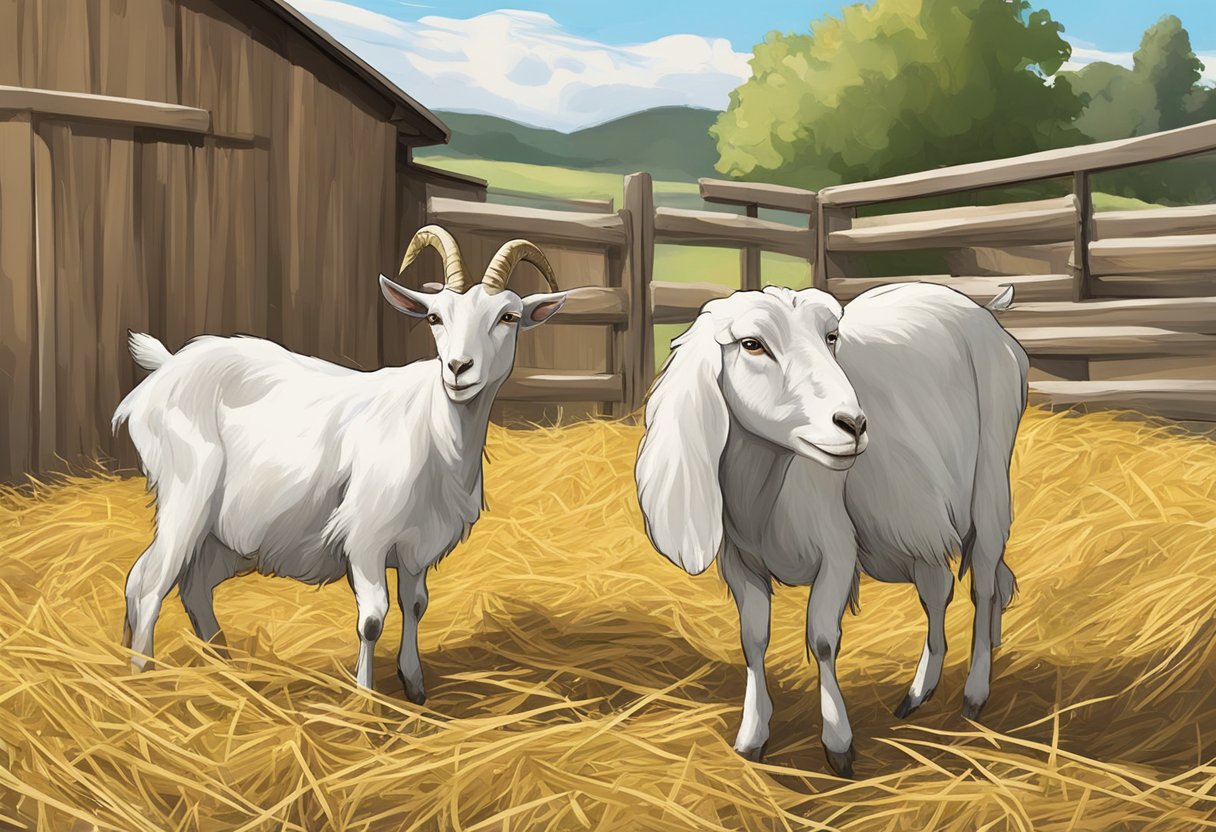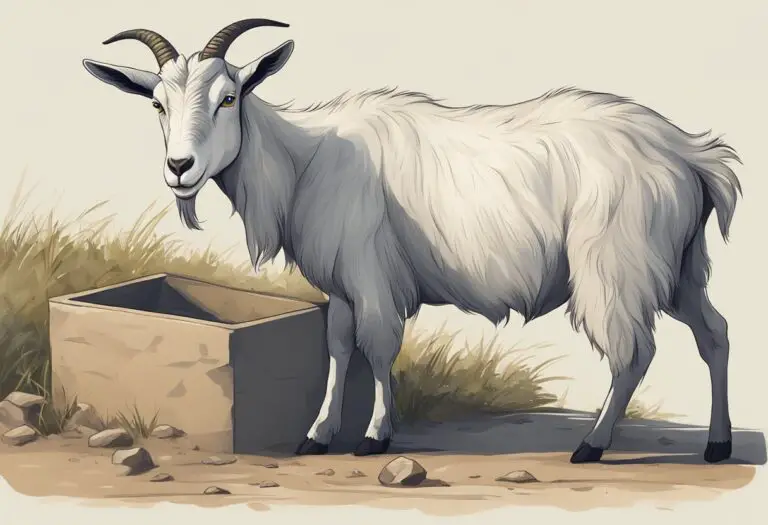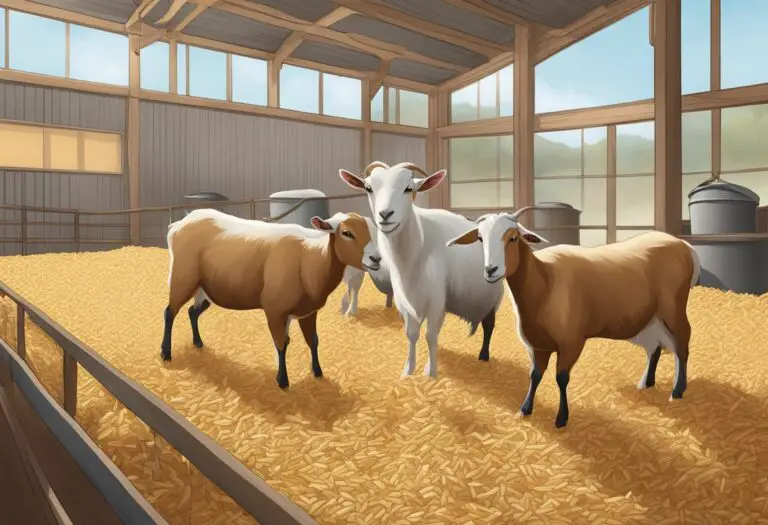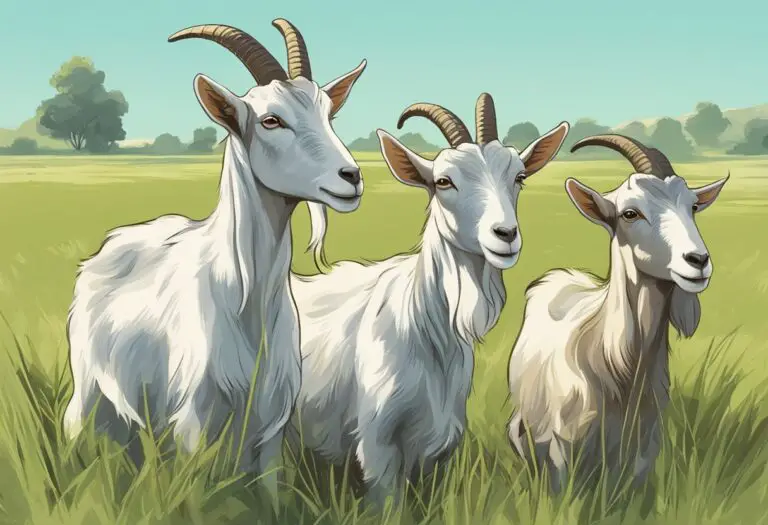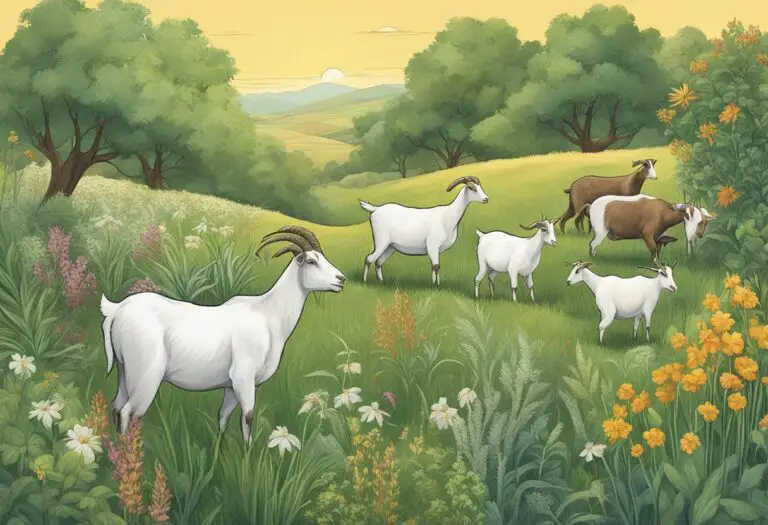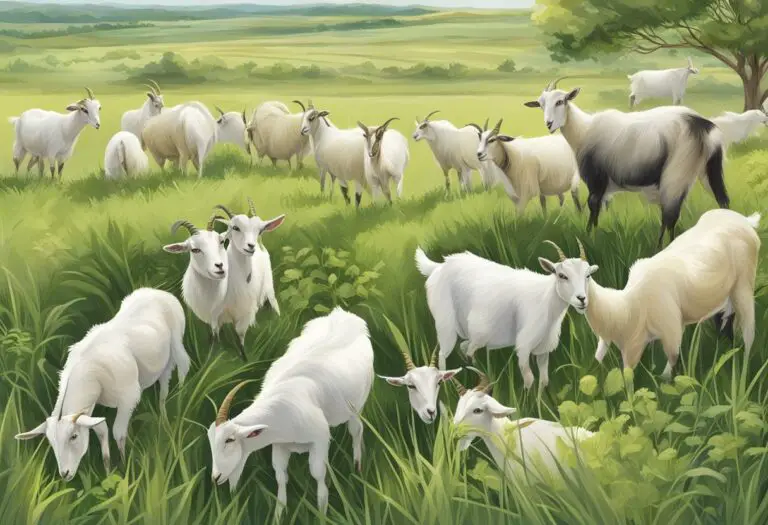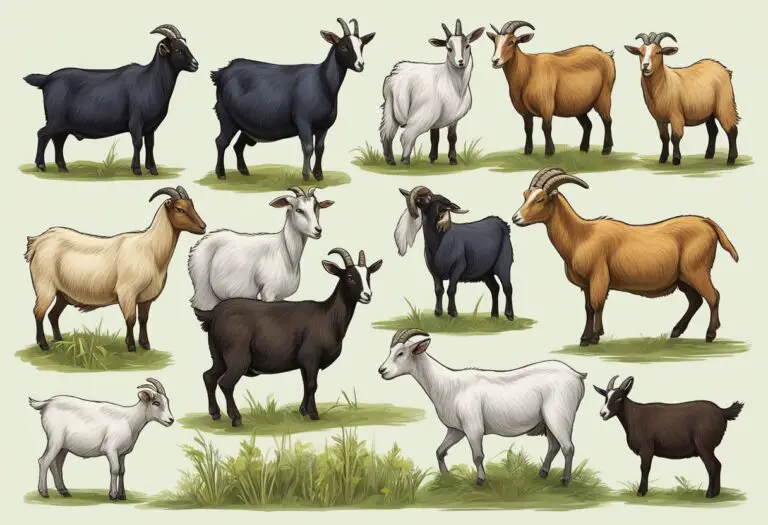When to Feed Hay to Goats: A Guide to Proper Nutrition
Goats are ruminants, which means they have a four-chambered stomach that allows them to digest roughage such as hay. Hay is a staple food for goats, providing them with the necessary nutrients and fiber required for healthy growth and development. However, it is important to know when to feed hay to goats to ensure they receive the proper nutrition.
The age, weight, and activity level of a goat will determine how much hay they need and when they should be fed. Young goats, known as kids, require more protein and energy than adult goats, so they should be fed hay more frequently. Pregnant and lactating goats also have higher nutritional requirements and should be fed more hay to ensure they produce enough milk for their offspring. Adult goats that are not pregnant or lactating may not need as much hay, depending on their activity level and the quality of the pasture they are grazing on.
In addition to age and activity level, the type of hay and the quality of the hay will also affect when and how much to feed goats. Alfalfa hay is higher in protein and calcium, making it ideal for young, growing goats and pregnant or lactating does. Grass hay is lower in protein and higher in fiber, making it suitable for adult goats that are not pregnant or lactating. It is important to ensure the hay is of good quality, free from mold or dust, and stored properly to prevent spoilage.
Understanding Goat Nutrition

Importance of Hay in a Goat’s Diet
Hay is an essential component of a goat’s diet as it provides them with the necessary fiber and roughage required for their digestive system to function properly. It also helps to maintain their body weight and keeps them warm during cold weather. Goats have a unique digestive system that requires them to eat hay regularly to avoid digestive issues such as bloating and constipation.
Goats should have access to hay at all times, especially during the winter months when grazing is scarce. They should be fed hay that is clean, fresh, and free from mold or dust. The amount of hay required will depend on the age, weight, and activity level of the goat. Adult goats typically require around 2-4 pounds of hay per day, while pregnant and lactating goats may require more.
Types of Hay Available for Goats
There are several types of hay available for goats, including alfalfa, timothy, orchard grass, and clover. Alfalfa hay is high in protein and calcium and is suitable for pregnant and lactating goats. Timothy hay is lower in protein and is ideal for adult goats that are not pregnant or lactating. Orchard grass hay is high in fiber and is suitable for all goats, while clover hay is high in protein and is best fed in moderation.
It is important to choose the right type of hay for your goats and to ensure that it is of good quality. Poor quality hay can lead to digestive issues and can cause your goats to lose weight. Goats should also have access to fresh water at all times to aid in digestion.
Determining the Right Time to Feed Hay

Goats are ruminants that require a diet rich in fiber to maintain their digestive health. While pasture and forage are the primary sources of fiber for goats, hay is an essential part of their diet, especially during the winter months. However, determining the right time to feed hay to goats can be tricky, as several factors can influence their dietary needs.
Seasonal Feeding Patterns
One of the critical factors that affect the timing of hay feeding is the seasonal changes in forage availability. During the growing season, when pasture and forage are abundant, goats may not require additional hay supplementation. However, in the winter months, when forage is scarce, hay becomes a critical part of their diet.
In areas with harsh winters, it is essential to start feeding hay before the forage becomes scarce. This ensures that goats have access to the necessary fiber and nutrients to maintain their health and well-being. Additionally, feeding hay during the winter months helps to prevent weight loss and other health issues that can arise from a lack of adequate nutrition.
Life Stage and Dietary Needs
Another critical factor that affects the timing of hay feeding is the life stage and dietary needs of goats. Pregnant and lactating goats require more nutrients and fiber than non-pregnant or non-lactating goats. As a result, they may require hay supplementation throughout the year to meet their dietary needs.
Young goats also have different dietary needs than adult goats. They require more protein and energy to support their growth and development. Therefore, it is essential to provide them with high-quality hay and other sources of protein and energy to ensure optimal growth and development.
In conclusion, determining the right time to feed hay to goats requires careful consideration of several factors, including seasonal feeding patterns and life stage and dietary needs. By providing goats with the necessary fiber and nutrients, farmers can ensure that their goats remain healthy and productive year-round.
Assessing Hay Quality

When it comes to feeding goats, hay is an essential part of their diet. However, not all hay is created equal. Assessing the quality of hay is important to ensure that goats are getting the necessary nutrients for optimal health. There are two main methods for assessing hay quality: nutritional content analysis and visual and sensory evaluation.
Nutritional Content Analysis
Nutritional content analysis involves testing hay for its nutrient levels. This can be done through laboratory analysis or by using a forage testing kit. The nutrient levels that should be evaluated include protein, fiber, energy, and minerals. The results of the analysis can help determine whether the hay is suitable for goats and whether any supplements are needed to balance their diet.
Visual and Sensory Evaluation
Visual and sensory evaluation involves using the senses to assess the quality of hay. This method involves looking at the hay, feeling it, and smelling it. Hay that is of good quality should be green, leafy, and have a sweet smell. It should also be free from mold, dust, and weeds. When feeling the hay, it should be soft and pliable, not brittle or overly dry.
In addition to visual and sensory evaluation, it is important to consider the type of hay being fed to goats. The three main types of hay are legume, grass, and mixed. Legume hay, such as alfalfa, is high in protein and calcium, making it a good choice for pregnant or lactating goats. Grass hay, such as timothy or orchard grass, is lower in protein and calcium, but still provides the necessary nutrients for goats. Mixed hay is a combination of legume and grass hay and can provide a balance of nutrients.
Overall, assessing hay quality is an important part of ensuring that goats are receiving the necessary nutrients for optimal health. By using both nutritional content analysis and visual and sensory evaluation, goat owners can make informed decisions about the type and quality of hay they are feeding their animals.
Feeding Hay to Goats: Best Practices

Proper Storage and Handling of Hay
Proper storage and handling of hay are crucial to ensure the quality and safety of the feed for your goats. Hay should be stored in a dry, well-ventilated area to prevent mold and moisture buildup. Storing hay off the ground on pallets or racks can also help prevent moisture from seeping in.
It is also important to inspect hay for signs of mold, dust, or other contaminants before feeding it to your goats. Any bales that are moldy or dusty should be discarded to prevent respiratory issues in your goats.
Feeding Frequency and Portion Sizes
The feeding frequency and portion sizes of hay for goats depend on several factors, including the age, weight, and activity level of the goats. As a general rule, adult goats should have access to hay at all times, but the amount of hay should be adjusted based on their weight and activity level.
For growing kids, hay should be provided in smaller portions several times a day to prevent overeating and digestive issues. It is also important to monitor the hay intake of pregnant and lactating goats to ensure they are receiving enough nutrients to support their growth and milk production.
In summary, proper storage and handling of hay are essential to ensure the quality and safety of the feed for your goats. Feeding frequency and portion sizes should be adjusted based on the age, weight, and activity level of the goats to prevent overeating and digestive issues.
Common Questions About Feeding Hay

When it comes to feeding hay to goats, there are some common questions that arise. Here are some answers to those questions:
How much hay should I feed my goats?
The amount of hay you should feed your goats depends on their age, weight, and activity level. A general rule of thumb is to feed 2-4% of their body weight in hay per day. For example, if your goat weighs 100 pounds, they should be eating 2-4 pounds of hay per day.
What type of hay should I feed my goats?
There are several types of hay that are suitable for goats, including alfalfa, clover, and grass hay. The type of hay you feed your goats should depend on their nutritional needs and what is available in your area. It’s important to provide your goats with high-quality hay that is free from mold, dust, and other contaminants.
When should I feed hay to my goats?
Goats should have access to hay at all times, especially during the winter months when fresh forage is scarce. Hay can also be fed as a supplement to grazing during the spring and summer months when forage is abundant. It’s important to monitor your goats’ hay intake to ensure they are not overeating and becoming overweight.
How should I store hay for my goats?
Hay should be stored in a dry, well-ventilated area to prevent mold and moisture buildup. It’s best to store hay off the ground on pallets or racks to prevent moisture from seeping in. Hay should be checked regularly for signs of mold or spoilage and any contaminated hay should be removed immediately.
Troubleshooting Feeding Issues

Even with proper hay feeding practices, goats may still experience some issues. Here are some common feeding problems and their solutions:
Hay Wastage
If the goats are wasting hay, it could be due to overfeeding or feeding low-quality hay. To prevent overfeeding, the goats should be given only the amount of hay they can consume in a day. If the hay is of low quality, it may be necessary to switch to a higher quality hay.
Hay Refusal
If the goats are refusing to eat hay, it could be due to boredom or a lack of appetite. To prevent boredom, provide the goats with toys or other forms of entertainment. If the goats have a lack of appetite, it may be necessary to consult a veterinarian to determine if there is an underlying health issue.
Hay Dust
If the hay is dusty, it could be due to poor storage or low-quality hay. To prevent dusty hay, store the hay in a dry, well-ventilated area. If the hay is of low quality, it may be necessary to switch to a higher quality hay.
Hay Mold
If the hay is moldy, it could be due to poor storage or low-quality hay. Moldy hay can cause health issues in goats, so it is important to remove any moldy hay from their diet. To prevent moldy hay, store the hay in a dry, well-ventilated area. If the hay is of low quality, it may be necessary to switch to a higher quality hay.
Hay Overconsumption
If the goats are overconsuming hay, it could be due to a lack of other nutrients in their diet. To prevent overconsumption, make sure the goats are receiving a balanced diet with the appropriate amount of protein, minerals, and vitamins. It may be necessary to consult a veterinarian or a nutritionist to determine the appropriate diet for the goats.

